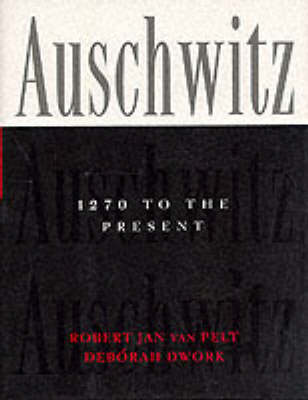The overwhelming horror and scale of the genocide associated with Auschwitz isolates it in the human imagination. In the 1940s, however, this epicentre of the Holocaust was located at the edge of a town of 30,000 that had become the focus of a Germanisation programme involving wholescale urban re-construction, massive industrial investment and ruthless ethnic cleansing. "Auschwitz, 1270 to the Present" elucidates how, step by step, this otherwise ordinary prewar town became Germany's most lethal killing site: a transformation wrought by human beings, mostly German and mostly male. Who were the men who conceived, designed and constructed the death camp? What lay in their minds as they systematically developed a human slaughter house?
Using the hundreds of architectural plans that the Nazis, in their haste, omitted to destroy, as well as blueprints and papers in the municipal archive of Auschwitz, the provincial archive of Upper Silesia, and the federal German archives, Robert Jan van Pelt and Deborah Dwork show that the town of Auschwitz and the camp of the same name were the centrepiece of Himmler's ambitious project to recover in Nazi-ruled Poland the German legacy of the Tuetonic Knights and Frederick the Great. Analysing the close ties between the 700-year history of the town and the five-year evolution of the concentration camp in its suburbs, they offer an interpretation of the origins and creation of the death camp. Drawing on oral histories of survivors, memoirs, depositions and diaries, the authors explore its ever more murderous impact on the daily lives of its inmates. A work of scholarship and narration, this is a history of the site that has come to epitomise evil.
- ISBN10 0300067550
- ISBN13 9780300067552
- Publish Date 17 September 1996 (first published 17 June 1996)
- Publish Status Out of Print
- Out of Print 22 September 2006
- Publish Country US
- Imprint Yale University Press
- Format Hardcover
- Pages 444
- Language English
